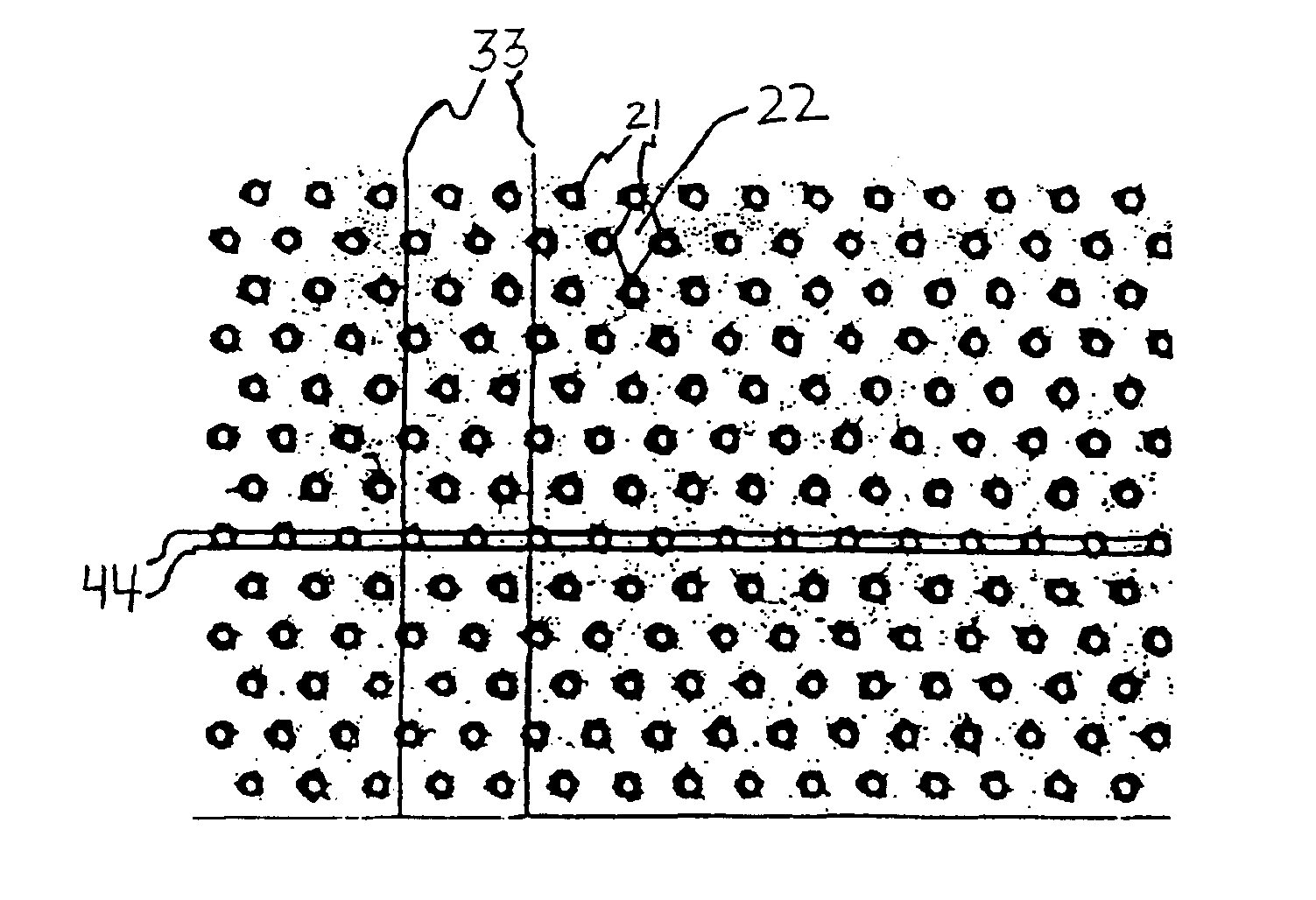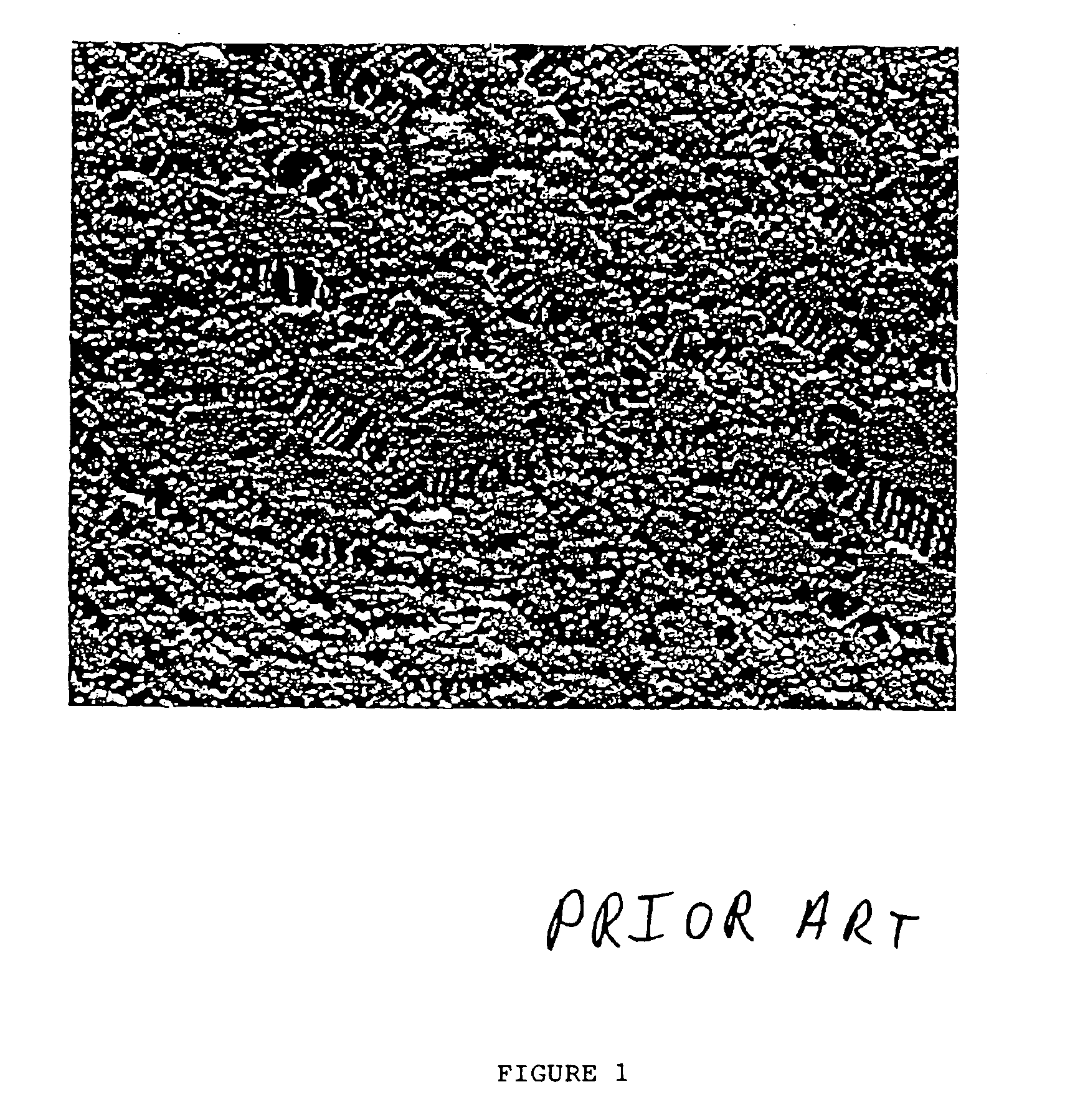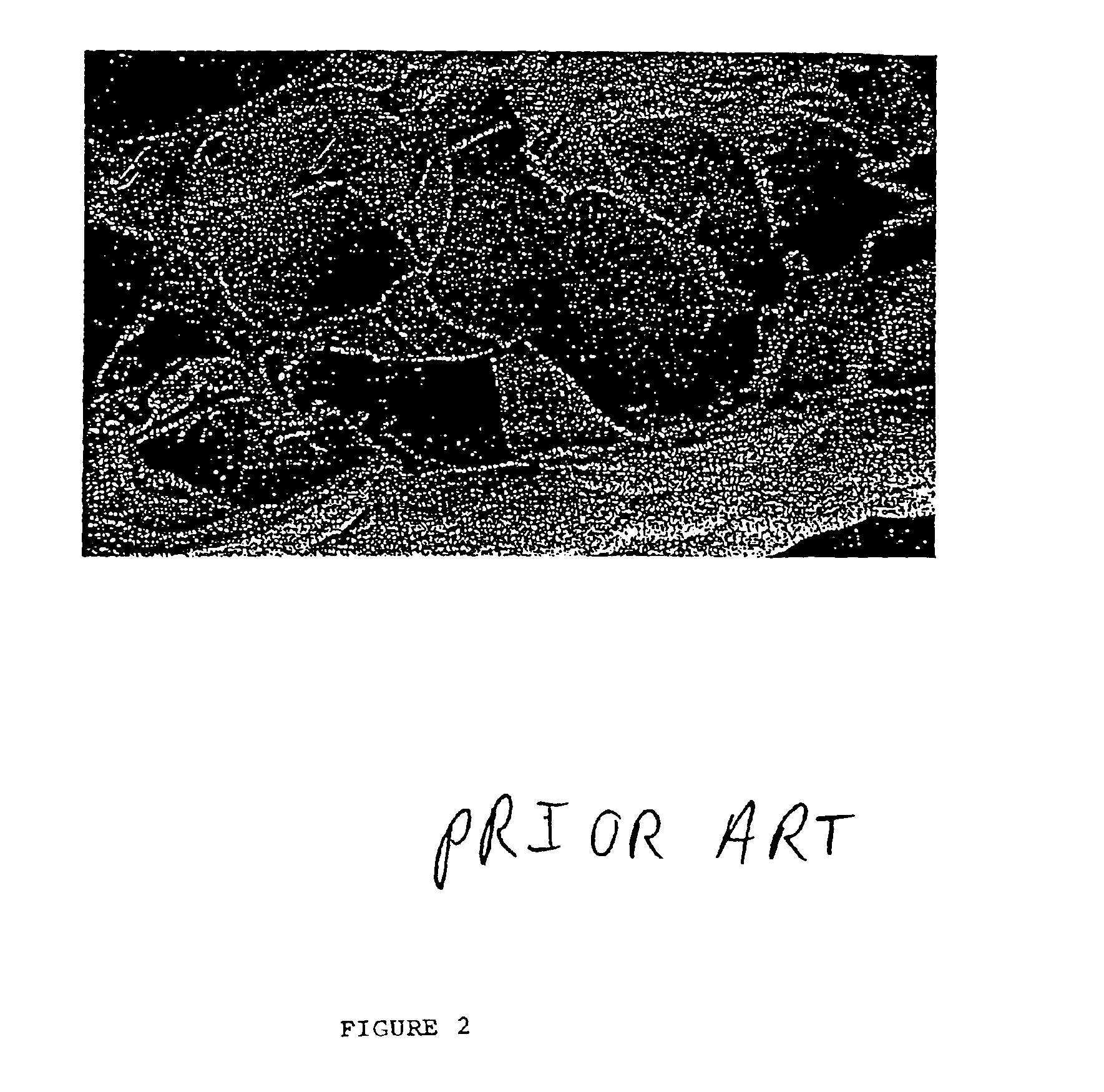Neovascularization promoting membrane for bioimplants
a bioimplant and promoting membrane technology, applied in the field of bioimplants, can solve the problems of reducing the output, affecting the effect of the implant, and the sensor cannot measure the level of the analyte, and the foreign body reacts with the resultant isolation of the implant from bodily tissues and fluids
- Summary
- Abstract
- Description
- Claims
- Application Information
AI Technical Summary
Benefits of technology
Problems solved by technology
Method used
Image
Examples
example 1
Uncoated (Prior Art) Bioimplants
One-centimeter segments of a 20 gauge PTFE catheter were implanted in the subcutaneous tissues of a rat. After five weeks, the catheters and surrounding tissues were removed and examined microscopically, as shown in FIG. 5. The photomicrograph of FIG. 5 shows a well-defined dense collagen capsule 41 about 35 micrometers in thickness and having substantially parallel oriented fibers between the PTFE device 42 and the surrounding loose connective tissue 43. Two cells 44 are visible at the junction of the catheter and the fibrous capsule.
example 2
Bioimplants Coated in Accordance with the Invention
One centimeter segments of PTFE catheters as in Example 1 were wrapped with a porous cellulose acetate membrane in which substantially uniform 5 micrometer pores having a substantially uniform interpore distance of 20 micrometers were laser-machined. After 5 weeks, the catheter and surrounding tissues were removed from the rat and examined microscopically, as shown in FIG. 6. The photomicrograph of FIG. 6 shows loose connective tissue 51 extending to the border of the PTFE catheter 52. A fibrous foreign body capsule was not detected, indicating that the microporous membrane surrounding the implant prevented, or at least greatly reduced, the formation of a foreign body capsule around the implant.
PUM
| Property | Measurement | Unit |
|---|---|---|
| Length | aaaaa | aaaaa |
| Area | aaaaa | aaaaa |
| Energy | aaaaa | aaaaa |
Abstract
Description
Claims
Application Information
 Login to View More
Login to View More - R&D
- Intellectual Property
- Life Sciences
- Materials
- Tech Scout
- Unparalleled Data Quality
- Higher Quality Content
- 60% Fewer Hallucinations
Browse by: Latest US Patents, China's latest patents, Technical Efficacy Thesaurus, Application Domain, Technology Topic, Popular Technical Reports.
© 2025 PatSnap. All rights reserved.Legal|Privacy policy|Modern Slavery Act Transparency Statement|Sitemap|About US| Contact US: help@patsnap.com



